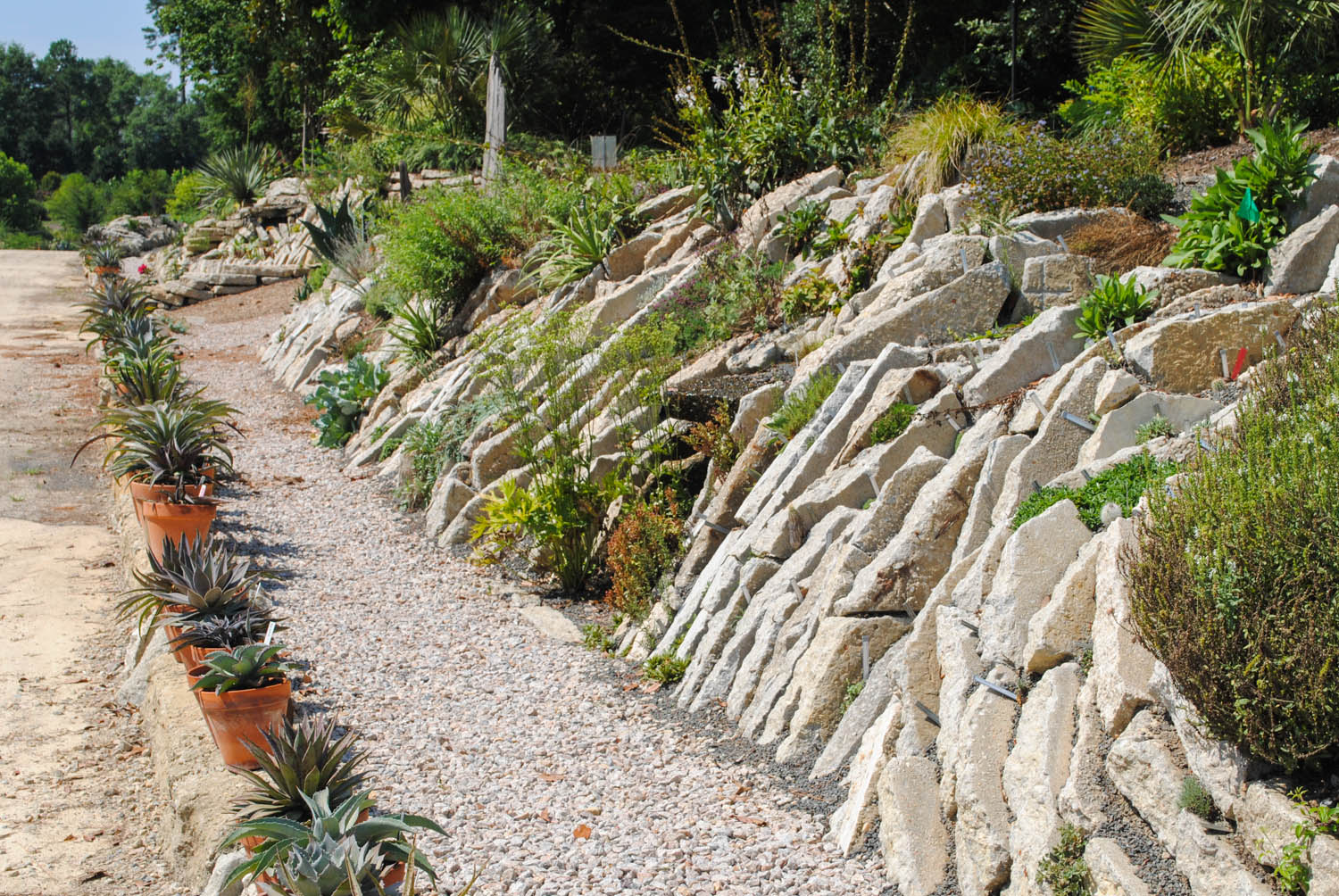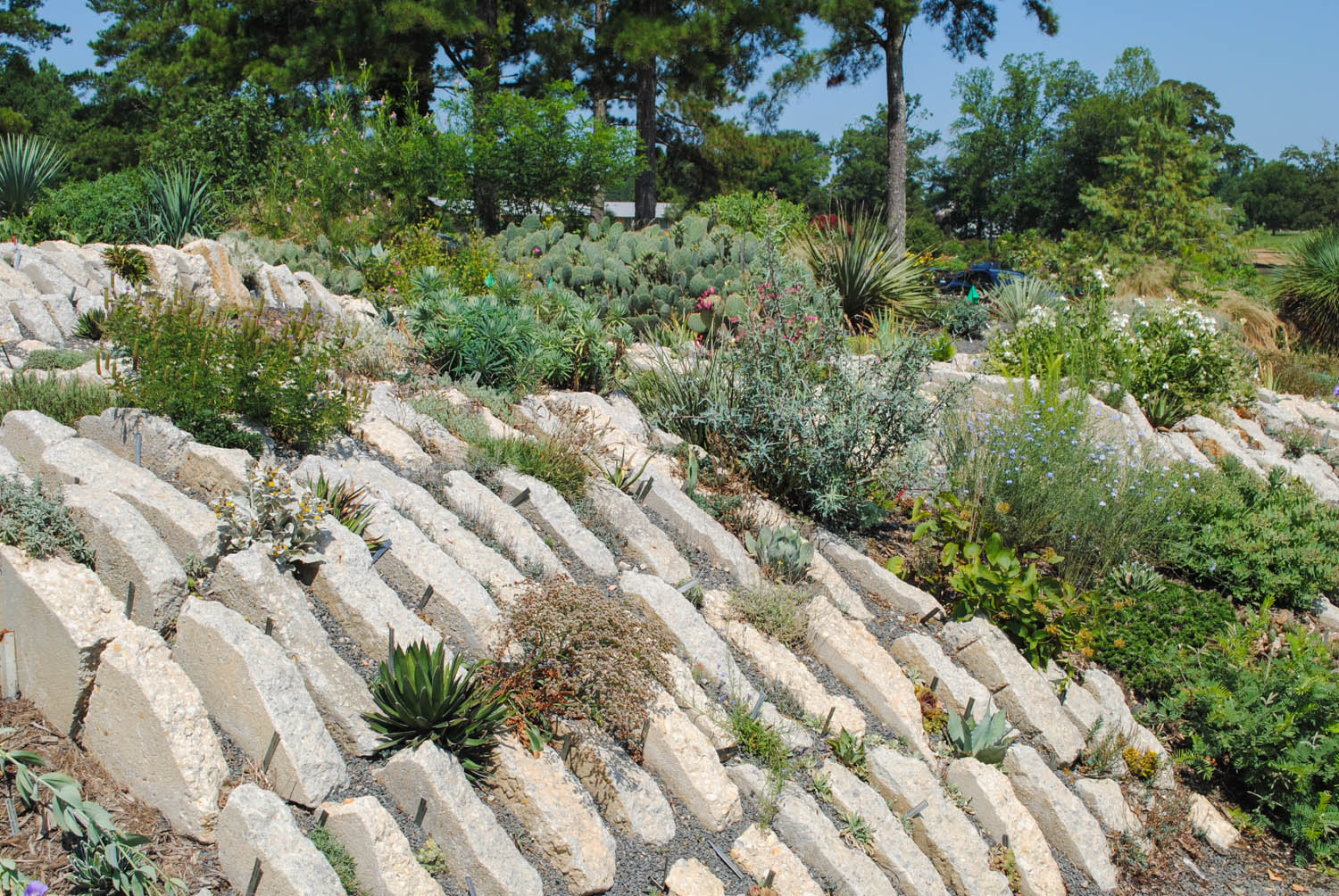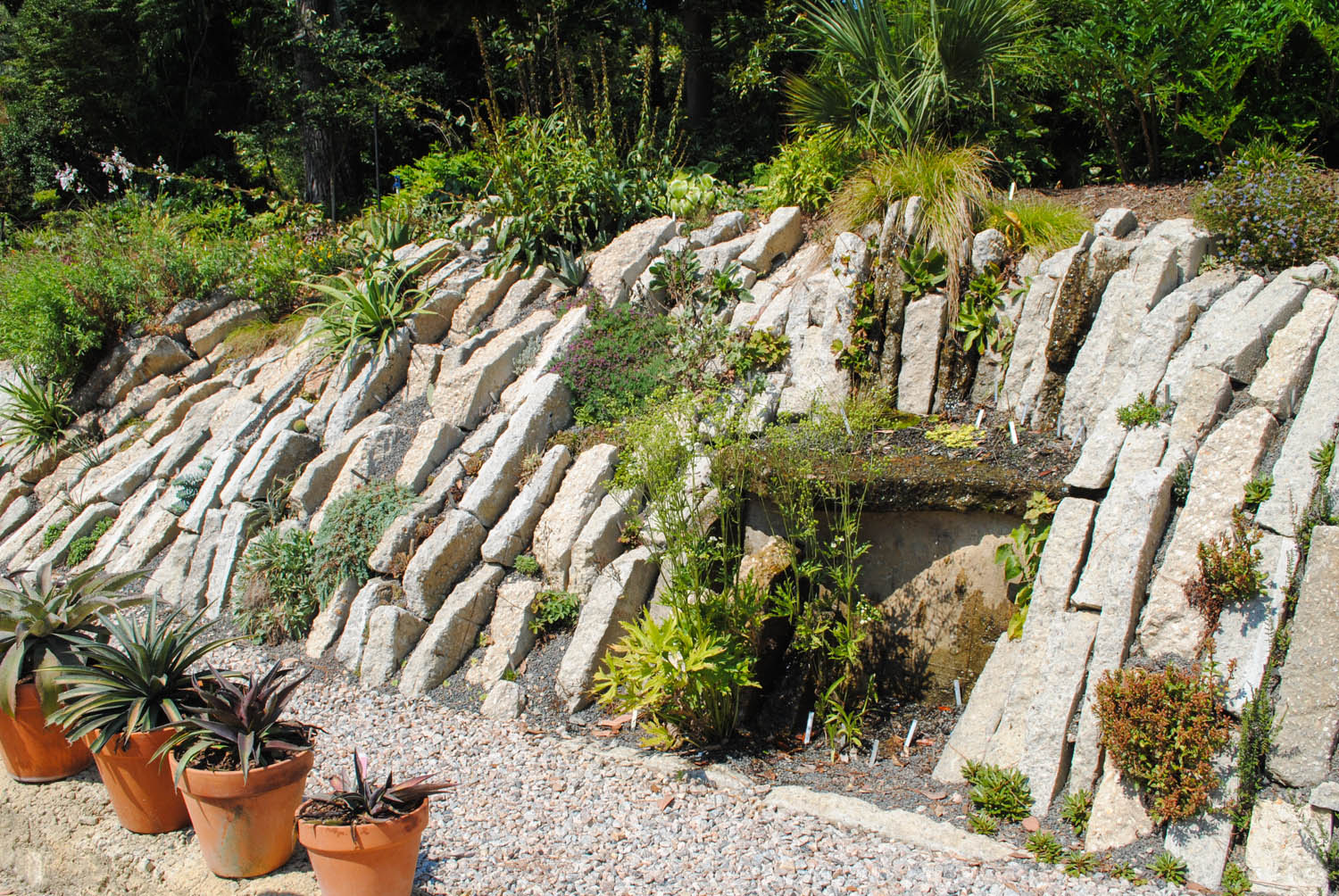While in North Carolina, I visited Plant Delights and the Juniper Level Botanic Garden (JLBG) for their open house. Jevon, one of my students from SFA who is interning at Hoffman Nursery this summer, joined me garden hopping.
It had been four years since I last visited JLBG and I was eager to see the changes, especially the crevice garden constructed with recycled concrete slabs from the handiwork and help of Jeremy Schmidt, supervisor of research and grounds development at JLBG, and Kenton Seth, planstman and crevice gardener from Colorado. The urbanite as Tony calls it was beautifully laid to mimic naturally occurring geologic strata like one might see on a highway roadside cut through the mountains. The faux rock outcrop looked like giant dominoes with imperfect edges resting on each other.
The crevice garden at Juniper Level Botanic Garden
Crevice gardens are typically built with stacked rock that hold some blend of well-draining gravel, compost, and soil. Gardeners may be surprised that plants can survive and grow in such conditions since we are taught to pamper and please our flora with the best conditions possible, but some species are adapted to the harsh life and need these rock faces to live. I viewed this crevice garden as a model of what can be done as humanity continues to figure out ways to incorporate plants in urban sites. Hardscape waste can be recycled to create plant habitats for unique flora, perhaps even some that are endangered or rare just like has been suggested for green roofs.
A long view of the crevice garden at Juniper Level Botanic Garden
I love the giant gnarly stump they incorporated!
A section on the north end where a few round-mounds can be seen.
I was surprised by the color in the crevice garden in July. I feel like other rock gardens sometimes bake in the southeast during the height of summer. If memory serves me right, the purple is a Eustoma.
The bends and folds of the rock resemble the millions of years of geologic strain typically seen on rock strata. Here all it took was a couple of people.
The troughs and containers complemented the crevice garden behind.
Most of the flora fit what we expected to see on a gravelly slope—plants with blue foliage, succulent tissue, hairs (actually trichomes) that reduce water loss, and round-mounds that occur in more xeric conditions. But, we were surprised and perplexed by the seeps in the wall. Surprised because it was a delight to see wet habitat in such dry conditions and perplexed because of the flora in them. One mini-bog even contained carnivorous plants that typically need acidic conditions and can’t tolerate high pH levels. How were they surviving in concrete slabs that would raise the growing media pH?
Jevon is delighted to see a bog! But, Sarracenia in limestone!?! How is this possible?
Another seep in the crevice garden at Juniper Level Botanic Garden.
In this seep water comes off the flat rock and drips into the planting below.
Later, when we saw Tony, we asked about how they were growing there. He said that these wet spots were lined to protect from the basic conditions. This contrast allows him to juxtapose plants that grow in wet and dry conditions right next to each other since sharp differences between xeric and hydric conditions occur in nature.
The garden was still young, so it will be fun seeing it in another few years to see how it’s evolved and aged. If you’d like to read more, check out Adrian Higgins piece from June 2019.
One final look before we go peruse the plants for sale. The crevice garden is truly a remarkable creation.










